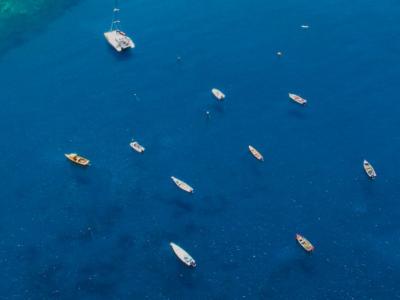Barbados is the most easterly island of the Antilles, bordered by the Caribbean Sea to the west and the Atlantic Ocean to the east, with a population of approximately 282,000 people (USDS, 2011). Its terrain is mostly flat but with a hilly interior. The island’s climate is tropical, with annual average temperatures of around 27°C (USDS, 2011). The country’s wet season lasts from June to November, while the dry season lasts from December to May (Wellington and Moore, 2001). In recent years there has been a change in the frequency of rainfall, with an increase the length of dry spells; this change has impacted agricultural production and water supplies (Wellington and Moore, 2001). As the island has no major rivers or surface streams, underground streams are the nation’s main source of water (Wellington and Moore, 2001).
The tourism, sugar, manufacturing, and finance and business sectors are Barbados’ main sources of foreign exchange (Wellington and Moore, 2001). Although sugar production was formerly a considerable contributor to the country’s Gross Domestic Product, economic diversification along with dramatic declines in soil fertility and drought in recent decades have diminished this crop’s importance to the national economy (Wellington and Moore, 2001). The majority of the workforce is employed by the following activities: tourism,government, manufacturing, construction, mining, agriculture and fishing (USDS, 2011). Barbados’ unemployment rate is 10 per cent, per capita income is approximately US$19,000 per year, and the island has a very high adult literacy rate at 99 per cent (USDS, 2011).
Of the numerous impacts of climate change expected, increases in atmospheric temperature, sea level rise (and its attendant impacts of erosion, inundation and saline intrusion), and changes in weather patterns (notably changes in the amount, and seasonality of rainfall, and changes in storm intensity), are expected to pose significant problems to Barbados.During the wet months, most of the rainfall is derived from tropical waves moving across the Atlantic Ocean, along with the Inter-Tropical Convergence Zone (I.T.C.Z.), which shifts northwards on occasions, especially during the passage of tropical waves. Although during the dry season, upper level troughs and lows and, to a much lesser extent, the tail end of cold fronts which survive after moving off the eastern seaboard of the United States of America, can contribute to the rainfall totals.Numerous adaptation measures and options have been proposed in Barbados: coastal adaptation options, water resource adaptation options, and adaptation options with regards to agriculture - including research on future climatic conditions and the selection of appropriate varieties of crops for cultivation.


